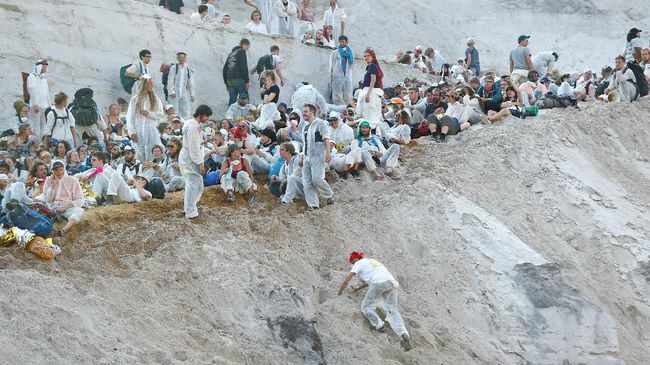Jakarta, CNBC Indonesia – The Covid-19 pandemic is not the only threat on earth. In fact, there is another threat that is just as dangerous, namely climate change.climate change).
Climate change occurs due to increased carbon emissions, thereby increasing the level of the earth’s temperature. Of course, this will have a negative impact on the earth and humans.
Recent research from the United States (US) states that if there is no change, then 95% of the earth’s sea level will be uninhabitable by 2100. Research on climate change has been carried out since the 18th century.
They also predict how carbon emissions will affect the world in 2021. One of them is marine life.
Quotes Nature World News, most marine life is supported by the sea surface which is characterized by the temperature of the surface water, acidity, and concentration of the mineral arogonite which is needed by marine creatures to make bones or shells. But with rising levels of CO2 (carbon dioxide) in the atmosphere, in at least three million years, there are concerns sea surface temperatures may become less friendly to the species that live there.
Seas that are warmer, more acidic, and have fewer of the minerals needed for life there to thrive make the ocean uninhabitable to marine creatures. According to lead author of the study Katie Lotterhos, of the Northeastern University Center for Marine Science, changes in ocean composition as a result of carbon pollution will likely affect all surface species.
“In the next few decades, the community of species found in one area will continue to move and change rapidly,” he said, quoted on Sunday (10/10/2021).
Meanwhile, the World Meteorological Organization (WMO) recorded the number of disasters, such as floods and heat waves (heatwave), due to climate change has increased fivefold over the last 50 years. Not only that, this series of disasters also killed more than 2 million people and cost a total of US$ 3.64 trillion or around Rp 51,981 trillion (assuming Rp 14,200/US$).
In its latest report, the UN organization said it carried out the most comprehensive review of deaths and economic losses from weather, water and climate extremes ever produced. It surveyed about 11,000 disasters that occurred between 1979-2019, including major disasters such as the 1983 drought in Ethiopia, the most fatal event with 300,000 deaths, and Hurricane Katrina in the United States (US) in 2005 which cost $163.61 billion in losses.
The report shows an accelerating trend, with the number of disasters increasing almost fivefold from the 1970s to the last decade. This adds to signs that extreme weather events are becoming more frequent due to global warming.
WMO associates increased frequency with climate change and better disaster reporting. The cost of the event also jumped from $175.4 billion in the 1970s to $1.38 trillion in the 2010s when hurricanes like Harvey, Maria and Irma hit the United States.
“Economic losses increase as exposure increases,” said WMO Secretary General Petteri Taalas.
While disaster hazards are becoming more expensive and frequent, the annual death toll has fallen from more than 50,000 in the 1970s to about 18,000 in 2010. This shows that better planning is paying off.
“The improved multi-hazard early warning system has led to a significant reduction in mortality,” Taalas added.
However, more than 91% of the 2 million deaths occur in developing countries. It notes that only half of the 193 WMO members have a multi-hazard early warning system. Petteri Taalas also said that “severe gaps” in weather observations, especially in Africa, undermined the accuracy of early warning systems.
WMO hopes the report will be used to help governments develop policies to better protect communities.
(boss / boss)
– .


/s3/static.nrc.nl/wp-content/uploads/2021/10/web-0910ecoenergie.jpg)